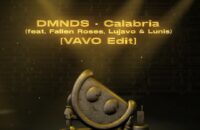Stuart Sweeney / ’16:9′
Digital / CD
Oomff / Released January 24th 2011
With an air of majesty, and composer-like elegance, music-industry veteran Stuart Sweeney arrives with his debut solo effort. And, at the same time, throws one in the eye of everyone who thinks terms like ‘boundary pushing’ and ‘dense’ can’t sit comfortably next to ‘enjoyable’ and ‘accessible’.
So what exactly is this record all about? Well, it’s sound art without the pretence, and ambience with something to latch onto. Take, for example, the layered strings of Where The Shores Meet, a truly remarkable aural representation of some vast sonic seascape. It’s beautiful, and blissed out, but it also comes complete with enough actual music to ensure that while your eyes may glaze over, this will do anything but send you to sleep.
It’s also true of the title track, which offers a greater sense of electronic-futurism, a little like Vangelis’ Blade Runner score. Again, we’ve got a textured arrangement of warm noise, but it has both form and structure that are equally identifiable. To accomplish so much from relatively so little is impressive, and it’s good to see how more complex tracks don’t fall short of the mark set by the aforementioned. Listen to the crystallised Orientalism of Gold & Red, or Cherry Blossom Falls, a tune destined to soundtrack the greatest of European epics. Then try not to imagine a symphony orchestra inside Sweeney’s Mac.
Downbeat, avant-garde electronica is a vast plateau on which the list of diverse styles and interpretations that exist is almost endless. There’s even room for artists who themselves would deny they belong on these somewhat spuriously titled shelves. In contrast to many other synthesized genres it’s within these blueprints that classical, and 21st Century compositions can blossom together. After hearing this album, and then learning that, while beatless, percussion instruments hand-welded by the artist make up many of the sounds therein, it’s clear this is one release that truly straddles classical and contemporary







